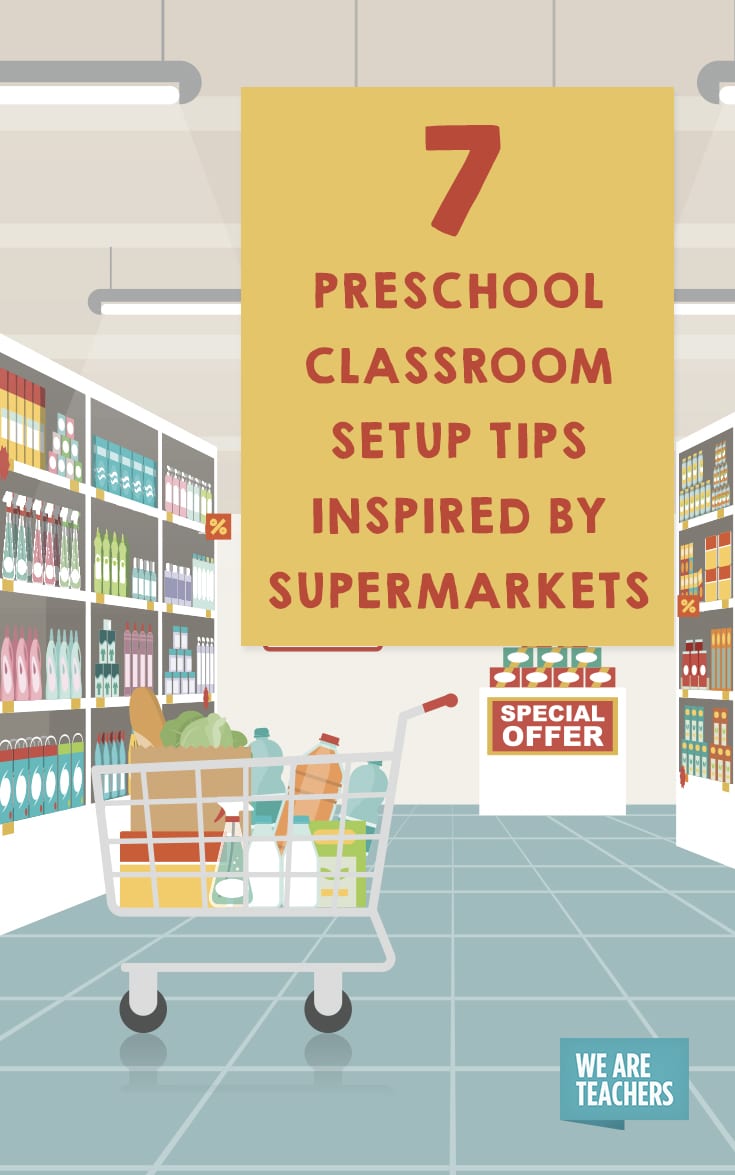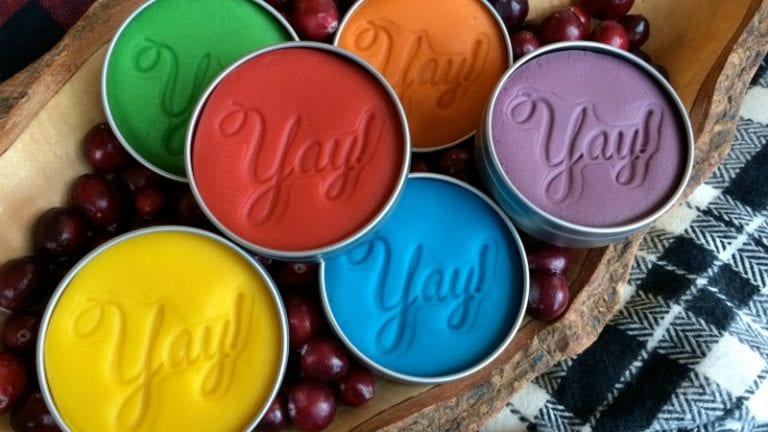Whether you’re the person who relishes a leisurely trip to the supermarket to fill your fridge each week or the one who makes a mad dash to the store after work for last-minute dinners, I’ll bet you have a favorite place to grocery shop. But have you ever thought about why you like that store so much? There’s a psychology behind every supermarket layout, lighting scheme, and background music. And you can use that same psychology to influence your preschool classroom setup to be more interesting, comfortable, and organized.
Before finalizing your floorplan for back-to-school, consider these tips used by successful supermarkets (adapted from the HighScope book, Essentials of Active Learning):”
1. Stock your shelves.
I was recently prepping for a BBQ and left my grocery store run disappointed. Not only was the store out of basil, thereby sabotaging my Caprese salad, but blue corn tortilla chips were nowhere to be found. Of course, I could simply buy yellow chips, but I had my heart set on blue.
Preschoolers go through similar emotions if they can’t find what they need in a classroom. Imagine a bright-eyed 4-year-old who is excited to go to the art area to paint a picture of the blueberries he just ate at snack time. But you’re out of blue paint. What happens next? Children’s plans are interrupted/derailed when they do not have the materials they need. This may lead to less productive work times, wandering, and impulsiveness rather than intentional outcomes. But if he gets to the art area and sees plenty of blue paint plus a variety of brushes and paper to choose from for several children to paint at the same time—you’ve got a happy and motivated kid ready to knock your socks of with his creativity.
2. Provide choices.
My favorite grocery store provides plenty of produce options. Whether I need a party pack of lemons for an event or one for cooking dinner, I can choose.
Providing preschoolers options allows them to make choices about what materials they want to include in their unique recipe for play. For example, a child who wants to build a castle may want to construct it with LEGO and wooden blocks, so both materials should be available to mix and match for complex and creative learning.
3. Avoid traffic jams.
I’m usually on a mission at the grocery store, weaving in and out of aisles at high speeds. And the best grocery stores facilitate my pace with uncluttered aisles and accessible shelves and clearly identified sections (e.g., pharmacy, produce, deli) that make it easy to plot my course. The supermarkets I don’t like usually have five-cart pileups caused by inconvenient displays of impulse items.
Preschool classroom setups should encourage free movement too but also have well-defined and labeled interest areas. That way, children may plot their own play courses and find relevant materials. Spacious areas accommodate many children and promote cooperative play. When students move easily between one area of the room to another, it doesn’t disrupt their friends’ playtime, and it makes for a safer classroom with fewer bumps and bruises. It also helps kids explore and expand their play by easily carrying materials from one area to another (e.g., bringing a “sick” doll from the house area to the block area to build an ambulance).
4. Label everything.
One of my biggest pet peeves is not being able to find what I’m looking for at the supermarket due to poorly labeled aisles, misplaced items, or nonsensical arrangements (like the peanut butter being in a different aisle than the jelly).
Preschoolers, like grocery shoppers, should be able to find what they need when they need it. When shelves and toy containers are labeled, children can more easily find, use, and return materials on their own. That builds independence. Proper labeling is essential and using simple words, drawings, photos, or real items (like gluing a paintbrush to the art area sign) as labels makes it easy for preschoolers at many developmental levels to understand. And just like PB and jelly should be found in the same aisle, you should keep similar classroom materials together (playdough, small rolling pins, and cookie cutters on the same shelf; cars, trains, trucks, and airplanes in close proximity).
5. Let the sun shine in.
Not only does good lighting in a grocery store make products more visible, it also sets the mood. I’m much more apt to spend time (and money) in a supermarket with high-quality lighting that makes the store feel upbeat and inviting.
While we often need to rely on artificial lighting in classrooms, it’s ideal to take advantage of natural lighting whenever possible. Open the blinds. If your classroom doesn’t have many windows, bring your class outside to read, explore nature, or blow off steam. Bonus: your class will have an opportunity to build large-motor skills by climbing and running.
6. Design within reach.
I’m not a tall person, so when I’m forced to scale the supermarket shelves desperately trying (without breaking a shelf or a limb) to reach my favorite cereal, I can relate to tiny tots who also have a limited reach.
When you’re deciding where to place materials, get down on your knees and take the perspective of your students. If items are within reach, it promotes independence. It saves you time too—kids who can reach the bin of puppets don’t need to ask for your help before they put on a show.
7. Offer seasonal specials.
There’s nothing quite like being welcomed into the supermarket in the fall with a seasonal display of pumpkin spice everything. Similarly, racks of red, white, and blue paper products or bins of fresh watermelon bring a smile to my face during a summer shopping trip.
While preschoolers thrive on consistency (and might be thouroughly upset if they walk into a classroom to find the house area has suddenly vanished), they’ll be equally excited when new and novel things show up in their classrooms. Some classrooms in northern climates turn their water table into a snow table on wintery days. You can also set up temporary pop-up areas in the classroom based on special interests. For example, create a bead area after visiting a jewelry maker’s studio or a woodworking area after meeting a carpenter. If your classroom is small, try changing just one area in your classroom on an infrequent rotating basis.



